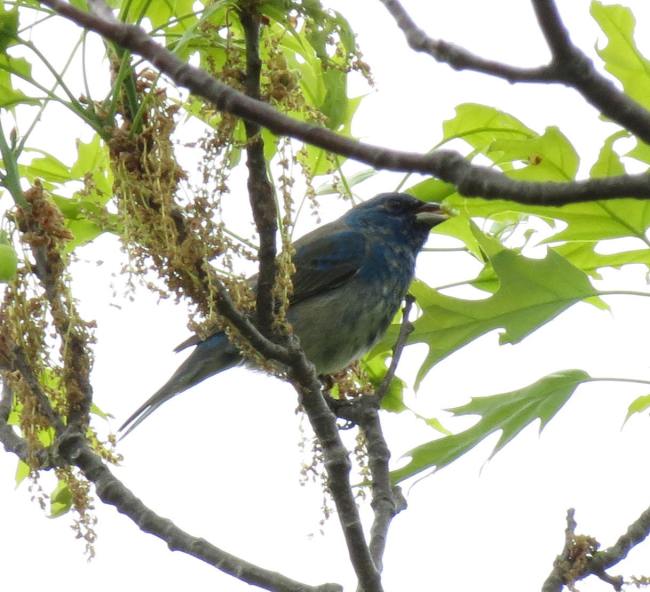First and foremost, ladies and gentlemen….the oak hairstreak!!!! The fruit of my burlap-flipping labor presented itself today in the form of a stout green prepupa attached to the burlap flap on a mature white oak tree near the stone lookout tower. To differentiate from other hairstreak larvae I have encountered in the area, this species has a dark dorsal heartline and is covered with small white speckles that appear to be setal bases though the only obvious setae are the fringe setae around the outside edges of its body. Finding this caterpillar both verifies white oak (Quercus alba) as the host plant for this hairstreak and demonstrates the efficacy of burlap band larval sampling. Just as we had theorized, we captured a prepupal caterpillar that was heading to the duff at the base of the tree to pupate. I could easily tell it was prepupal because it was developing a rosy tinge to its posterior edge. I carefully collected this specimen from the burlap and put it in a container with proper substrate to pupate in. Through prior research on the Oak Hairstreak, I am quite confident this is the larva, but it must be reared to adulthood to make a proper identification. When it emerges, this single butterfly will be saved as a voucher specimen for this project and used to do any DNA work. I am incomprehensibly excited and relieved to have found this caterpillar, but also surprised at how far it was from the slope.
In checking all the other burlap skirts, I found one new species, Lytrosis unitaria, a large geometrid. On another band, I found a large cluster of Forest Tent caterpillars in a group molt. They formed a very conspicuous, fuzzy lump on the tree. As I walked through the woods, I noticed a nigh number of Dasychira obliquata caterpillars as well as green sawflies (Craterocercus sp. or Pristiphora sp.) eating oak. I don’t seem to remember running into so many of these last year.
The other species that has reached devastating numbers as we realized during the night visit is the winter moth (Operophthera brumata). Below is the type of damage that these pesky and voracious little caterpillars can do.

































